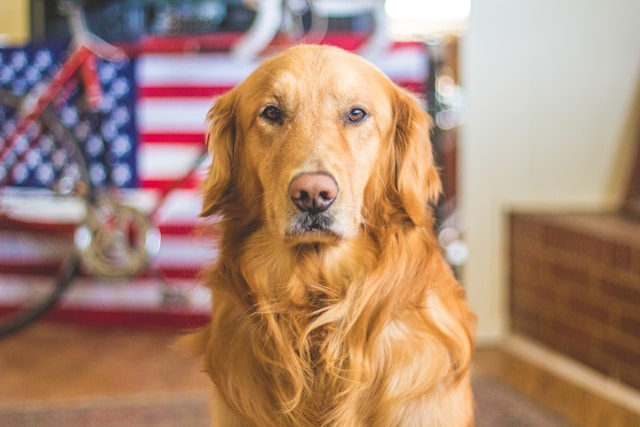Ultimate Guide to Dog Skin Care: Tips for a Healthy and Happy Coat
Your dog’s skin and coat are vital indicators of their overall health. A healthy coat not only looks good but also reflects your pet’s well-being. Proper skin care can prevent and address many common issues that affect dogs, from dryness and itching to more serious skin conditions. This guide will provide you with all the information you need to keep your dog’s skin and coat in top condition.
Understanding Common Skin Problems in Dogs
1. Fleas and Ticks
Description: Fleas and ticks are common external parasites that cause itching, irritation, and can lead to secondary skin infections.
Symptoms: Scratching, biting at the skin, visible fleas or ticks, hair loss, and red or inflamed skin.
Treatment: Use veterinarian-recommended flea and tick prevention products. In case of an infestation, topical treatments or oral medications may be necessary. Consult your vet for the best options for your dog.
2. Allergies
Description: Allergies in dogs can be caused by various factors including food, pollen, dust mites, and mold. Allergic reactions can lead to itchy, inflamed skin.
Symptoms: Itching, redness, rashes, ear infections, and watery eyes. Allergic dogs may also experience gastrointestinal issues.
Treatment: Identifying and eliminating the allergen is key. Your vet may recommend antihistamines, corticosteroids, or special diets to manage symptoms.
3. Dermatitis
Description: Dermatitis is an inflammation of the skin that can result from allergies, infections, or irritants. It often presents as itchy, red, and swollen skin.
Symptoms: Red patches, swelling, itching, and sometimes pus-filled bumps.
Treatment: Treatment depends on the underlying cause. Your vet may prescribe topical or oral medications to reduce inflammation and treat the infection.
4. Hot Spots
Description: Hot spots are localized areas of inflamed skin that are often the result of itching or irritation. They can rapidly become infected if not treated.
Symptoms: Red, moist, and inflamed areas on the skin that may have hair loss and a foul odor.
Treatment: Clean the area with an antiseptic, keep it dry, and use an Elizabethan collar to prevent your dog from licking or scratching. Consult your vet for appropriate antibiotics or anti-inflammatory treatments.
5. Dry Skin
Description: Dry skin can be caused by environmental factors, nutritional deficiencies, or underlying health conditions.
Symptoms: Flakiness, itching, dull coat, and sometimes hair loss.
Treatment: Increase your dog’s hydration and incorporate omega-3 fatty acids into their diet. Moisturizing shampoos and conditioners can also help.
6. Yeast Infections
Description: Yeast infections often affect the skin and ears and are usually caused by an overgrowth of yeast fungi.
Symptoms: Itchy, greasy skin, a musty odor, and sometimes redness or hair loss.
Treatment: Antifungal medications and topical treatments can manage yeast infections. Regular cleaning of affected areas and addressing any underlying conditions are essential.
Preventive Measures for Maintaining Healthy Skin
1. Regular Grooming
Grooming is crucial for maintaining your dog’s skin and coat health. Regular brushing removes dirt, dead hair, and reduces the risk of mats and tangles. It also stimulates natural oils in the skin, promoting a healthy coat.
2. Proper Nutrition
A balanced diet is fundamental for healthy skin. Ensure your dog’s food contains high-quality proteins, essential fatty acids, and vitamins. Omega-3 and omega-6 fatty acids, found in fish oil, can improve skin health and reduce inflammation.
3. Hydration
Proper hydration supports overall skin health. Always provide fresh, clean water for your dog to drink. Dehydration can lead to dry skin and other health issues.
4. Regular Vet Check-ups
Regular veterinary visits help catch any skin issues early. Your vet can perform skin exams, recommend preventative treatments, and provide advice tailored to your dog’s specific needs.
5. Safe Environment
Create a safe environment for your dog to prevent skin injuries and irritants. Ensure your home is free from harsh chemicals, and avoid exposing your dog to extreme temperatures or allergens.
6. Appropriate Bathing
Bathing your dog too frequently can strip natural oils from their skin, leading to dryness and irritation. Use a mild, dog-specific shampoo and bathe them only as needed. Always rinse thoroughly to remove all shampoo residues.
Home Care Tips for Common Skin Issues
1. For Itchy Skin
Apply a soothing oatmeal-based or anti-itch shampoo. You can also use a vet-approved anti-itch spray or topical treatment. Ensure your dog is not exposed to known allergens or irritants.
2. For Dry Skin
Incorporate moisturizing products designed for dogs into their grooming routine. Adding fish oil or flaxseed oil to their diet can also help improve skin hydration.
3. For Minor Cuts and Scrapes
Clean the area with a mild antiseptic and keep it covered to prevent infection. Monitor the wound for signs of infection, and consult your vet if it does not improve.
When to See a Vet
Seek veterinary advice if your dog shows any of the following signs:
- Persistent itching or scratching
- Severe redness or swelling
- Unexplained hair loss
- Wounds that do not heal or show signs of infection
- Abnormal odor from the skin or ears
Prompt attention to skin issues can prevent more serious conditions and ensure your dog remains comfortable and healthy.
Conclusion
Maintaining your dog’s skin health is essential for their overall well-being. By understanding common skin problems, implementing preventive measures, and seeking timely veterinary care, you can help keep your dog’s skin and coat in excellent condition. Regular grooming, a balanced diet, and a safe environment all contribute to a healthy and happy dog.
With the right care and attention, you can ensure that your dog’s skin remains vibrant, their coat shiny, and their overall health in top shape. For any specific concerns or symptoms, always consult with your veterinarian to get the most accurate diagnosis and treatment.











Leave a Reply